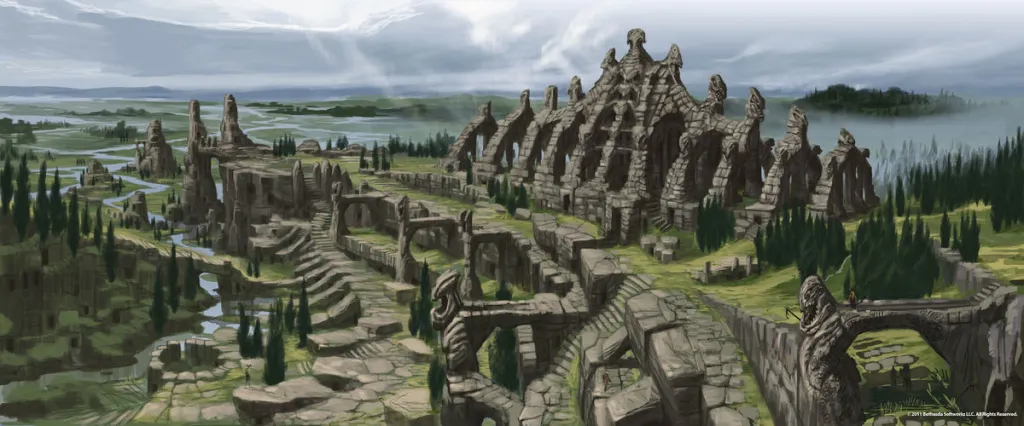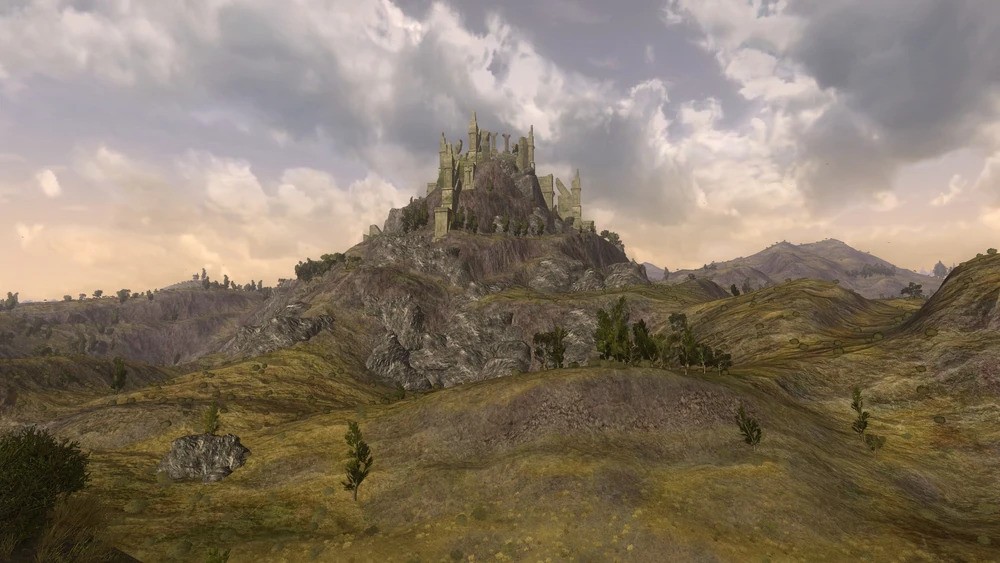Lucas C. Marinho1 & Liming Cai2
1 Departamento de Biologia, Universidade Federal do Maranhão, São Luís, Maranhão, Brazil. Email: lc.marinho (at) ufma (dot) br
2 Department of Botany & Plant Sciences, University of California, Riverside, California, USA. Email: limingc (at) ucr (dot) edu
https://doi.org/10.5281/zenodo.8241575
With more than 260,000 species, flowering plants represent one of the most spectacular radiations on Earth, and provide enormous value to humankind (Stevens, 2017). In the Pokémon universe, however, plant-derived Pokémon, or Grass-type Pokémon, are surprisingly scarce compared to Pokémon resembling vertebrates or arthropods (Le Vaillant, 2020). Representative Grass-type Pokémon feature a number of charismatic flora including the carnivorous Bellsprout (#069), the drought-adapted Cacnea (#331), and the giant Vileplume (#045). The critters in the latter’s evolutionary line, in particular, represent early examples of Grass-type Pokémon that exhibit a suite of distinctive features such as the absence of green pigments in evolved forms and the presence of poisonous chemical compounds (that is, they are also Poison-type).
There are four Pokémon in this evolutionary line: Oddish (#043), Gloom (#044), Vileplume, and Bellossom (#182), which represent four distinct stages on a chain of gradual metamorphosis (the latter two being mutually exclusive).

These Pokémon are found throughout all regions in the Pokémon world except Alola (Bulbapedia, 2021). Oddish is the juvenile stage, characterized by its blue body and green leaves. It metamorphoses (“evolves” in game terms) into Gloom, which has red leaves and a dull brown perianth with white spots. The change in leaf color suggest the transition to a heterotrophic lifestyle (non-photosynthetic) and the evolution of a perianth may attract pollinators for reproduction. Vilpelume and Bellossom, on the other hand, demonstrate two diverse tracks of metamorphosis from Gloom. In Vileplume, the iconic features from Gloom become even more exaggerated: the perianth turns extremely showy and the leaves are lost. Bellossom, in contrast, has green leaves and is morphologically and physiologically more similar to Oddish than to its precursor, Gloom.

Compared to the limited diversity of Grass-type Pokémon, flowering plants are crucial and significant components of Earth’s ecosystems. They supply food for animals and provide habitable shelters for all living organisms. Among them, the parasitic plant family Rafflesiaceae exhibit extraordinarily unique characteristics compared to other free-living plants. They do not have identifiable stems, leaves and roots but rely on the tropical grapevine hosts Tetrastigma for nutrients and water. The host-derived energy supports the production of the world’s largest flower in the species Rafflesia arnoldii. In sum, both Rafflesiaceae and Vileplume have a number of life history traits that are otherwise rare among their relatives. Here, we present a comprehensive analysis of the morphological, physiological and ecological characteristics of the Grass/Poison Pokémon Vileplume and the parasitic plant species Rafflesia arnoldii.
Methods
The morphological and behavioral characteristics of Vilpelume were collected from the Pokédex (The Pokémon Company, 2021) and Bulbapedia (2021). For the plant family Rafflesiaceae and the species R. arnoldii, morphological descriptions were obtained from the scientific literature.
Vileplume

Vileplume (Japanese: ラフレシア [Rafureshia]) is a Grass/Poison Pokémon from Generation I. It evolves from Gloom if the player uses a Leaf Stone. Vileplume usually has a purplish body and bears five giant red petals with white spots, which give it its fame of having the largest petals in the Pokémon world (The Pokémon Company, 2021). Color variations are found in isolated populations. For example, the Vileplume on Pinkan Island have a pink body (Bulbapedia, 2021), possibly due to the accumulation of carotenoids from their diet. Populations from Valencia Island are even more unusual, they do not have white spots on red petals, but instead have orange petals with red rings (Bulbapedia, 2021).

Rafflesiaceae
Rafflesiaceae is a family of leafless, rootless, and non-photosynthetic parasitic plants belonging to the order Malpighiales (Nikolov & Davis, 2017), which also includes cassava, castor bean, flax, poplars, and rubber trees. The family consists of ca. 40 species distributed in three genera: Rafflesia, Rhizanthes and Sapria, all of which are endemic (restricted) to southern China, northeast India, Bhutan, Thailand, Malaysia, and western Indonesia (Meijer, 1997; Barcelona et al., 2009; Bendiksby et al., 2010). These plants are specialized parasites on Tetrastigma, which is a group of liana species in the grapevine family (Vitaceae).

Species of Rafflesiaceae live entirely inside the host and only emerge when they are ready to reproduce. The flower releases a foul odor to recruit carrion flies for pollination (Patiño et al., 2002). Among these two dozen species, the most charismatic is R. arnoldii, which produces the largest flower in the world. This species is the national flower of Indonesia and it even appears on the Malaysian Ringgit.

Morphological similarities
Floral gigantism — Both Vileplume and R. arnoldii are characterized by scarlet petals with white spots. In addition to the overall similarity in the coloration, both Vileplume and R. arnoldii keep the record of flower size in the Pokémon world and the real world. Vileplume can reach up to 1.2 meter high, weighing 18.6 kilograms (Bulbapedia, 2021). Rafflesia arnoldii, on the other hand, can grow to a diameter of around one meter, weighing up to 11 kilograms (Cunningham, 2002).
Sexual dimorphism — Both Vileplume and R. arnoldii are dioecious, meaning that the male and female blossoms appear on separate plants. Female Vileplume have fewer, but larger white spots on their petals compared to the male (The Pokémon Company, 2021). Flowers of R. arnoldii have five sepals (not petals; Nikolov et al., 2013) and a central chamber structure. Male flowers have anthers situated underneath the disk within the central chamber while female flowers have styles instead.

Physiological differences
Carnivorous versus parasitic — Though similar in morphology, Vileplume differs fundamentally from R. arnoldii in its life history strategy. Vileplume is photosynthetic and carnivorous, while R. arnoldii is non-photosynthetic and relies entirely on its host for nutrients. When exposed to bright sunlight, Vileplume can increase its speed via the Chlorophyll ability. This photosynthetic pigment chlorophyll converts the solar energy to chemical energy. On the contrary, R. arnoldii has completely lost the ability to photosynthesize (Nikolov et al., 2014). It is even hypothesized that it has lost its chloroplast (Molina et al., 2014; Cai et al., 2021). However, the unique green color from the photosynthetic pigment chlorophyll is not easily observed in Vileplume. Only the shiny version has a green body (and orange petals). It is therefore possible that chlorophyll only exists in small quantities in the vast majority of Vileplume populations and other photosynthetic pigments such as carotenoids play a major role in photosynthesis instead. The carnivorous habits of Vileplume may also be an outcome of adaptive evolution in the face of reduced photosynthetic ability.
Vegetative organs — Vileplume, along with many other Grass-type Pokémon, learns the Razor Leaf offensive move, in which leaf blades are launched at high speed and cause damage to opponents. Rafflesia arnoldii, however, have lost all identifiable leaves because they are non-photosynthetic. The entire plant grows as a mass of thread-like strands within the host before they flower. Similar to the mycelium of fungi, these structures absorb nutrients directly from the host, hampering the host’s growth.
Weapons for predation versus pollination — One important adaptive feature of Vileplume is its poisonous pollen, which triggers potent allergic reactions in its prey (The Pokémon Company, 2021). In peak seasons, Vileplume can release a tremendous amount of pollen such that it is surrounded by a yellow cloud of pollen. With every step, Vileplume shakes out a tremendous amount of toxic pollen. This noxious pollen is similar to the foul volatiles emitted by R. arnoldii to attract pollinators. But unlike Vileplume, R. arnoldii uses its decomposition-mimicking volatiles to attract carrion flies for deceptive pollination (Beaman et al., 1988; Bänziger, 1991). Moreover, in Vileplume the propagation of the toxic pollen is achieved by shaking petals, but in R. arnoldii it is hypothesized that the emission of the odor is facilitated by raising their temperature above environmental average (Patiño et al., 2000, 2002). Combined with the white and red pattern on the petal and hair-like trichomes that resembles animal fur (Beaman et al., 1988; Nikolov et al., 2014), R. arnoldii is highly successful in tricking flies to act as pollinators — these insects even lay eggs within the flowers (Bänziger, 1996).

CONCLUSION
Here we addressed ecological and morphological aspects of Vileplume in relation to its real-world counterpart, R. arnoldii. Both species exhibit similarities in floral morphology, but we also identified several important differences in anatomy, morphology, and physiology between these two species, which were associated with their carnivorous versus parasitic habit. Future research should focus on the ecology and evolution of Vileplume. Is Vileplume pollinated by Cutiefly (#742)? How does the color variation seen on the Pinkan and Valencia Islands contribute to the reproductive barrier in this species? What is the genetic mechanism of the evolution of a five-petaled flower (Vileplume) from a four-petaled one (Gloom)?
REFERENCES
Bänziger, H. (1991) Stench and fragrance: unique pollination lure of Thailand’s largest flower, Rafflesia kerrii Meijer. Natural History Bulletin of the Siam Society 39: 19–52.
Bänziger, H. (1996) Pollination of a flowering oddity: Rhizanthes zippelii (Blume) Spach (Rafflesiaceae). Natural History Bulletin of the Siam Society 44: 113–142.
Barcelona, J.F.; Pelser, P.B.; Balete, D.S.; Co, L.L. (2009) Taxonomy, ecology, and conservation status of Philippine Rafflesia (Rafflesiaceae). Blumea 54: 77–93.
Beaman, R.S.; Decker, P.J.; Beaman, J.H. (1988) Pollination of Rafflesia (Rafflesiaceae). American Journal of Botany 75: 1148–1162.
Bendiksby, M.; Schumacher, T.; Gussarova, G.; Nais, J.; Mat-Salleh, K.; Sofiyanti, N.; Madulid, D.; Smith, S.A.; Barkman, T. (2010) Elucidating the evolutionary history of the Southeast Asian, holoparasitic, giant-flowered Rafflesiaceae: Pliocene vicariance, morphological convergence and character displacement. Molecular Phylogenetics and Evolution 57: 620–633.
Bulbapedia. (2021) Bulbapedia: the community driven Pokémon encyclopedia. Available from: https://bulbapedia.bulbagarden.net/ (Date of access: 28/Feb/2021).
Cai, L.; Arnold, B.J.; Xi, Z.; Khost, D.E.; Patel, N.; Hartmann, C.B.; Manickam, S.; Sasirat, S.; Nikolov, L.A.; Mathews, S.; Davis, C.C. (2021) Deeply altered genome architecture in the endoparasitic flowering plant Sapria himalayana Griff. (Rafflesiaceae). Current Biology 31: 1002–1011.
Cunningham, A. (2002) Guinness World Records. Guinness World Records, London.
Le Vaillant, J. (2020) What’s your favourite Pokémon? Pocket monster popularity reflects interest in real-world Biology. Journal of Geek Studies 7(1): 35–52.
Meijer, W. (1997) Rafflesiaceae. In: van Steenis, C.G.G.J. & Steenis-Kruseman, M.J. (Eds.) Flora Malesiana. Series 1 – Seed Plants, Volume 13. Rijksherbarium, Leiden. Pp. 1–42.
Molina, J.; Hazzouri, K.M.; Nickrent, D.; Geisler, M.; Meyer, R.S.; Pentony, M.M.; Flowers, J.M.; Pelser, P.; Barcelona, J.; Inovejas, S.A.; Uy, I.; Yuan, W.; Wilkins, O.; Michel, C.I.; Locklear, S.; Concepcion, G.P.; Purugganan, M.D. (2014) Possible loss of the chloroplast genome in the parasitic flowering plant Rafflesia lagascae (Rafflesiaceae). Molecular Biology and Evolution 31: 793–803.
Nikolov, L.A. & Davis, C.C. (2017) The big, the bad, and the beautiful: biology of the world’s largest flowers. Journal of Systematics and Evolution 55: 516–524.
Nikolov, L.A.; Endress, P.K.; Sugumaran, M.; Sasirat, S.; Vessabutr, S.; Kramer, E.M.; Davis, C.C. (2013) Developmental origins of the world’s largest flowers, Rafflesiaceae. PNAS 110: 18578–18583.
Nikolov, L.A.; Tomlinson, P.B.; Manickam, S.; Endress, P.K.; Kramer, E.M.; Davis, C.C. (2014) Holoparasitic Rafflesiaceae possess the most reduced endophytes and yet give rise to the world’s largest flowers. Annals of Botany 114: 233–242.
Patiño, S.; Grace, J.; Bänziger, H. (2000) Endothermy by flowers of Rhizanthes lowii (Rafflesiaceae). Oecologia 124: 149–155.
Patiño, S.; Aalto, T.; Edwards, A.A.; Grace, J. (2002) Is Rafflesia an endothermic flower? New Phytologist 154: 429–437.
Stevens, P.F. (2017) Angiosperm Phylogeny Website. Version 14. Available from: http://www.mobot.org/MOBOT/research/APweb/ (Date of access: 01/Mar/2021).
The Pokémon Company. (2021) The official Pokémon website. Available from: https://www.pokemon.com/ (Date of access: 28/Feb/2021).
Acknowledgements
We thank Dr. Charles Davis from Harvard University for insightful feedback on the manuscript.
About the authors
Dr. Lucas C. Marinho is a professor and botanical taxonomist. He would like to be a Rock/Ground Pokémon trainer, but for now he just trains two dogs.
Dr. Liming Cai is a plant systematic biologist. She is also a secret entomologist and a portrait artist. She grew up watching the Pokémon TV series, but hasn’t been a big fan of the game.





2 responses to “Floral gigantism in the Pokémon world”
[…] and rarity, Rafflesia has develop into widespread showing in postage stamps, cash payments, and it even has its pokemon counterpart — Vileplume! Vileplume, the biggest flower within the pokemon world, is impressed by R. arnoldii although there […]
LikeLike
[…] and rarity, Rafflesia has become popular appearing in postage stamps, money bills, and it even has its pokemon counterpart — Vileplume! Vileplume, the largest flower in the pokemon world, is inspired by R. arnoldii though there are […]
LikeLike